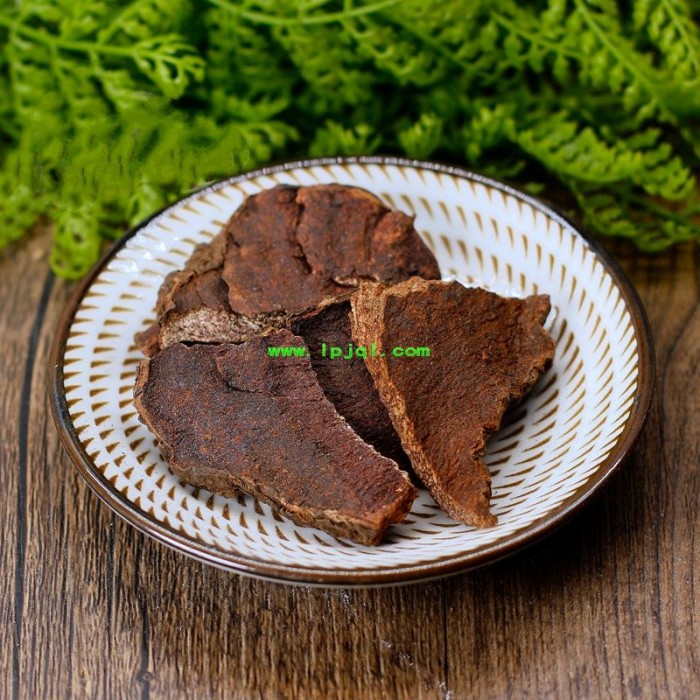500g, Hong Yao Zi, Ciliatenerve Knotweed Root, Tcm Herbal
Pinyin: HónɡYàoZǐ
English name: Ciliatenerve Knotweed Root, Root of Ciliatenerve Knotweed
Aliases: red medicine, red medicine, cinnabar seven, yellow yam seed, cinnabar lotus, monkey blood seven, blood panax notoginseng, hair gourd, realgar, medical steamed bun, scattered blood egg, chicken blood lotus, spot blood, blood
Source: From "The Sketch Book".
The source of the medicinal material: the root of the Polygonaceae plant Polygonum pilosa.
Latin name of plant, animal and mineral: Polygonum ciliinerve (Nakai) Ohwi
Alias: red medicine, red medicine, cinnabar seven, yellow yam seed, cinnabarum, monkey blood seven, blood panax notoginseng, hair gourd, realgar, medical mantou, scattered blood egg, chicken blood lotus, spot blood, blood
The source is from "The Sketch Book".
The source of the medicinal material: the root of the Polygonaceae plant Polygonum pilosa.
Latin name of plant, animal and mineral: Polygonum ciliinerve (Nakai) Ohwi
Harvesting and storage: It can be harvested throughout the year, removing the stems and leaves, fibrous roots, washing, and slicing and drying.
The original form of Polygonum pilosa, a perennial trailing herb. The rhizome swells into a lump and is woody. The stem is slender, hollow, green-purple, branched at the apex. The stipules are membranous, brown, almost transparent. Leaves alternate; petiole length 0.5-5cm, upper face groove, lower face mucous papillary protrusions or tiny cilia; leaves oblong oval, 6-11cm long, 3-6cm wide, panicles terminal or axillary; flowers with Obviously small peduncle; perianth white or lavender, 5-lobed, lateral lobes midrib winged; stamens 8, ovary triangular, stigma 3, shield-shaped. The nutlets are triangular in shape, black-purple, and are covered by expanded membranous wings. Flowering in summer.
Ecological environment of habitat division: Born on hillsides, roadsides, beaches or rocks.
Resource distribution: Distributed in Northeast, Northwest, Hubei, Hunan, Sichuan, Guizhou and other places.
Character identification: The tuber is irregular block, or slightly cylindrical, 8-15cm long, or longer, 3-7cm in diameter, brown-yellow surface, or slightly cylindrical, 8-15cm long, or longer, diameter 3-7cm, the surface is brownish yellow. Most of the stem base on the root head is lumpy. The texture is extremely hard, difficult to break, and the profile is dark yellow. Most of the stem base on the root head is lumpy. The texture is extremely hard, difficult to break, and the profile is dark yellow. The wood is dark and light yellow in a ring shape, and there are scattered light yellow xylem bundles near the pith. Smell and bitter.
Microscopic identification: Root section: Cork layer is 10 rows of dark brown cork cells. The inner layer of the plug is 4-5 rows of cells; the cortex is thinner. The phloem is broad, and the phloem bundles are strip-shaped, slightly curved, surrounded by wood fibers into bundles, and arranged in two rounds. There are abnormal vascular bundles in the pith. And 20-60μm; and containing starch grains, oblong, nearly triangular, 4-12μm in diameter, umbilical point crack or "cross" shape.
Chemical composition: Polygonum pilosa tuber contains emodin, physcion, and emodin-8-β-D-glucopyranoside (emodin-8-β-D-glucopyranoside, anthraglycoside B) and emodin methyl ether-8-β-D-glucopyranoside (anthraglycoside A) (physcion-8-β-D-glucopyranoside, anthraglycoside A), also contains tannins.
Pharmacological effects: mice are given 175g/kg decoction, which has obvious cough-relief and expectorant effects; root decoction has obvious anti-acetylcholine effect in isolated rabbit ileum test; test tube test is only for aureus and white Staphylococcus There is a slight inhibitory effect.
Identification physical and chemical identification:
(1) Take 0.5g of this product powder, add proper amount of ethanol and reflux for extraction for 2h. Divide 3ml of the ethanol extract and place it in different test tubes: 1. Add 1ml of 2% sodium hydroxide solution to show a cherry red color. 2. Add 1% ferric chloride dropwise to show dark brown.
(2) Take the above ethanol extract and drop it on the filter paper and place it under a fluorescent lamp (254) to observe the light red fluorescence.
(3) Thin-layer chromatography, refer to "Buckwheat Seven" for methods and results.
Nature and flavor: bitter taste; slightly astringent; cool in nature
Return meridian: lung; large intestine; liver meridian
Functions and indications: clearing away heat and detoxification; cooling blood; promoting blood circulation. Main respiratory tract infection; tonsillitis; acute bacillary dysentery; acute enteritis; urinary system infection; multiple hemorrhages; bruises; irregular menstruation; rheumatic arthralgia; heat toxin sores; burns
Usage: Dosage: oral decoction, 3-5g; powder, 1-2g. External use: appropriate amount, grind powder and apply.
Excerpt from "Chinese Materia Medica"
Buy before reading:
★ picture only for reference to the kind of delivery subject. Because the herbs are different from other commodities, each batch of goods fineness is not exactly the same, we can do is choose a good quality of delivery, this please rest assured!
Disclaimer
All testimonies found on this website are 100% genuine. Actual
results may vary per individual, and should be used
inconjunction with a proper nutritionally balanced diet plan and
exercise regime. The statements made on our websites
have not been evaluated by the MHRA or FDA (U.S. Food & Drug
Administration). These products are not intended
to diagnose,cure or prevent any disease. You should consult with a
healthcare professional before starting any diet,
exercise or supplementation program, before taking any medication,
or if you have or suspect you might have a health
problem. Our dietary supplements are not recommended for persons
under the age of 18 unless recommended by a GP.
| Product basic attributes | |
| Shelf Life: | 365 days |
| Storage: | Dry storage, low temperature refrigeration |
| Organic or inorganic | organic |
Customer Service
Extras
My Account
Powered By lpjql
tcm herbal © 2024





